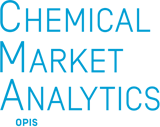- Market Overview
- Key Benefits
- Service Features
- Annual Table of Contents
Market Overview
Duration: Long-term outlook to 2050
Propylene oxide (POX) is a highly reactive chemical intermediate with no direct consumer application. The dominant end use for propylene oxide is to produce polyether polyols. Polyether polyols are further used in the production of flexible and rigid polyurethane systems, which find applications in a wide range of industries and products such as transportation, construction, appliances, furniture, bedding, packaging, adhesives and sealants, and surface coatings. The second-largest end use of propylene oxide is propylene glycol, used in food and pharmaceutical sectors as well as for antifreeze and deicing aircraft. Butanediol can also be produced from propylene oxide, but this demand segment is small.
Propylene is the primary feedstock to produce POX, and there are three main production routes: the chlorohydrin route, peroxidation, and hydroperoxidation. The chlorohydrin process to produce POX—the oldest and, at one time, the most prevalent technology—has slowly been losing capacity share as other technologies have become more attractive. As the process utilizes chlorine, only integrated chlor-alkali producers use this route. The PO direct processes (either hydrogen peroxide–propylene oxide [HPPO] or cumene) represent the latest generation of production technology and are designed to produce POX without concerns of coproduct economics or environmental issues surrounding chlorohydrin. The process is more capital-intensive than the competing technologies, and its operating costs are higher than propylene oxide–styrene monomer (PO–SM) and propylene oxide–tert-butyl alcohol/methyl tert-butyl ether (PO–TBA/MTBE). However, it remains a preferred technology because it does not possess the risk level of other technologies. POX processes relying on coproduct values have been subject to the volatility of the coproduct markets over the years, particularly as PO–SM and PO–TBA/MTBE coproducts are produced at a rate of 2.1–2.3 times the output of POX.
Key Benefits
Duration: Long-term outlook to 2050
The World Analysis – Propylene Oxide provides a comprehensive analysis and key insights into critical market developments as they shape the future outlook for the global propylene oxide market.
The following reports, data files, analytical tools and visualization modules are available online and can be downloaded from our website:
- Direct Access to the Subject Matter Experts
- In-depth exploration of present market strategic insights, recognition of critical challenges, and presentation of our experts’ forecasts and analysis
- Explanatory Notes detailing data sources, methodologies, unit and conversion factors, and World Analysis deliverables.
- Energy and Economy assumptions
- Price, cost, and margin base assumptions forecast and sensitivities analysis, including price assessment methodology and price definitions across all regions.
- Excel data files with standard supply/demand graphics and price forecasts extended to 2050, trade grids with country and regional trade flows Data appendix (Excel) with supply/demand, capacity and trade tables.
- An online dashboard visualization of capacity, supply/demand, trade grids, and price, cost and margin forecasts
- Supply/demand and capacity database access via data browser
- Data Appendix (Excel) with supply/demand and capacity tables
- Capacity by company/shareholder, capacity integration, top producer/consumer and surplus/deficit capacity ranking, and ownership/subsidiary information
In addition to the main product, propylene oxide, capacity data is provided for the following products:
- 1,4-Butanediol
- Polyether polyols
- Propylene glycol
This World Analysis contains detailed information on capacities, production, demand, and trade for all significant producing and consuming countries and regions. Although data gathering is essential for understanding history and potential future trends, we believe that the interpretation and analysis of the data is the most valuable information to our clients.
Service Features
Duration: Long-term outlook to 2050
SUPPLY/DEMAND BALANCES
Frequency: Bi-annual
Format: Excel
Timeframe: 10-year forecasts available from periods 1990 – 2050
Area Coverage: By country/region; include “hypothetical” capacity changes in the forecast period
Chemical Coverage: Cumene, Phenol, Acetone, Bisphenol A
CAPACITY DATABASE
Frequency: Updated daily
Format: Excel
Timeframe: 10-year forecasts available from periods 1990 – 2050
Coverage:
- Nameplate capacity on individual plant location by producer and by the shareholder for main study products + essential derivatives
- Integration table and top producer and consumer ranking tables (includes net surplus/deficit)
PRICE & COST FORECASTS
Frequency: Quarterly
Format: Excel
Timeframe: up to 2050
Area Coverage: For the critical regions of North America (US), Europe & Asia
Chemical Coverage: Cumene, Phenol, Acetone
TRADE GRIDS
Frequency: Bi-annual
Format: Excel
Timeframe: 1 year of history, up to 10 years of forecast
Area Coverage: Between partner countries and by region
Chemical Coverage: Cumene, Phenol, Acetone
REPORT WITH STRATEGIC INSIGHTS AND EXECUTIVE OVERVIEW
Frequency: Annual
Format: PDF/HTML
Timeframe: 5-year history, forecast to 2050
Coverage: Regional market summaries
- Production economics/snapshots for selected regions/processes
- Production process/technology overview
ADDITIONAL FEATURES
- Access to our global team of subject matter experts
- Interactive data visualization module (dashboard)
- Standard supply/demand graphs
- Data appendix with supply/demand and capacity tables
- Supply/demand and capacity database access via data browser
Annual Table of Contents
- Introduction 4
- Executive Overview 5
- Strategic Insights 8
- Direct PO processes becoming more commonplace 8
- A significant wave of capacity investment is underway 8
- Polyols for polyurethanes offer strong demand-growth prospects 9
- Trade is expensive; therefore, POX derivatives are typically located next to POX production 9
- Production Process Overview 11
- Introduction 11
- Chlorohydrin Process 11
- Peroxidation Processes 12
- Hydrogen Peroxide Direct Process 13
- Cumene process 15
- Price Forecast 16
- Methodology 16
- North America 17
- West Europe 18
- Northeast Asia 19
- Price forecast tables 20
- Supply/Demand Forecast Methodology 22
Market Coverage
Adhesives
Buildings & Constructions
Foam
Paint & Coating
Related Products
Related Chemicals
Looking for Short Term Analysis ?
Your Success, Our Priority
In a world where markets evolve rapidly, having the right insights is the key differentiator. Partner with us for critical market insights that propel you beyond competition. Your success is not just a goal, it's our commitment.
Contact us today to revolutionize your approach to business strategy with Market Insights!



